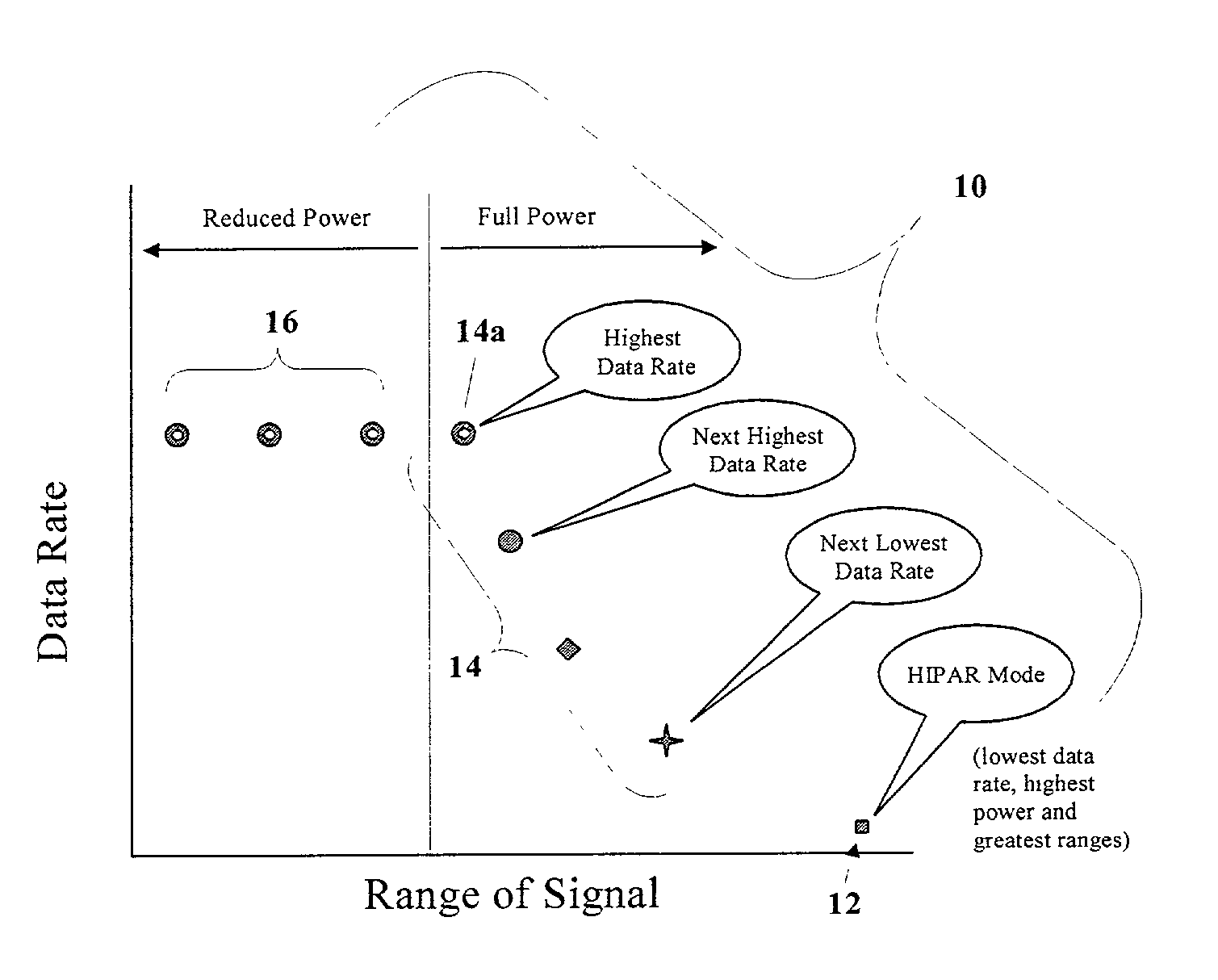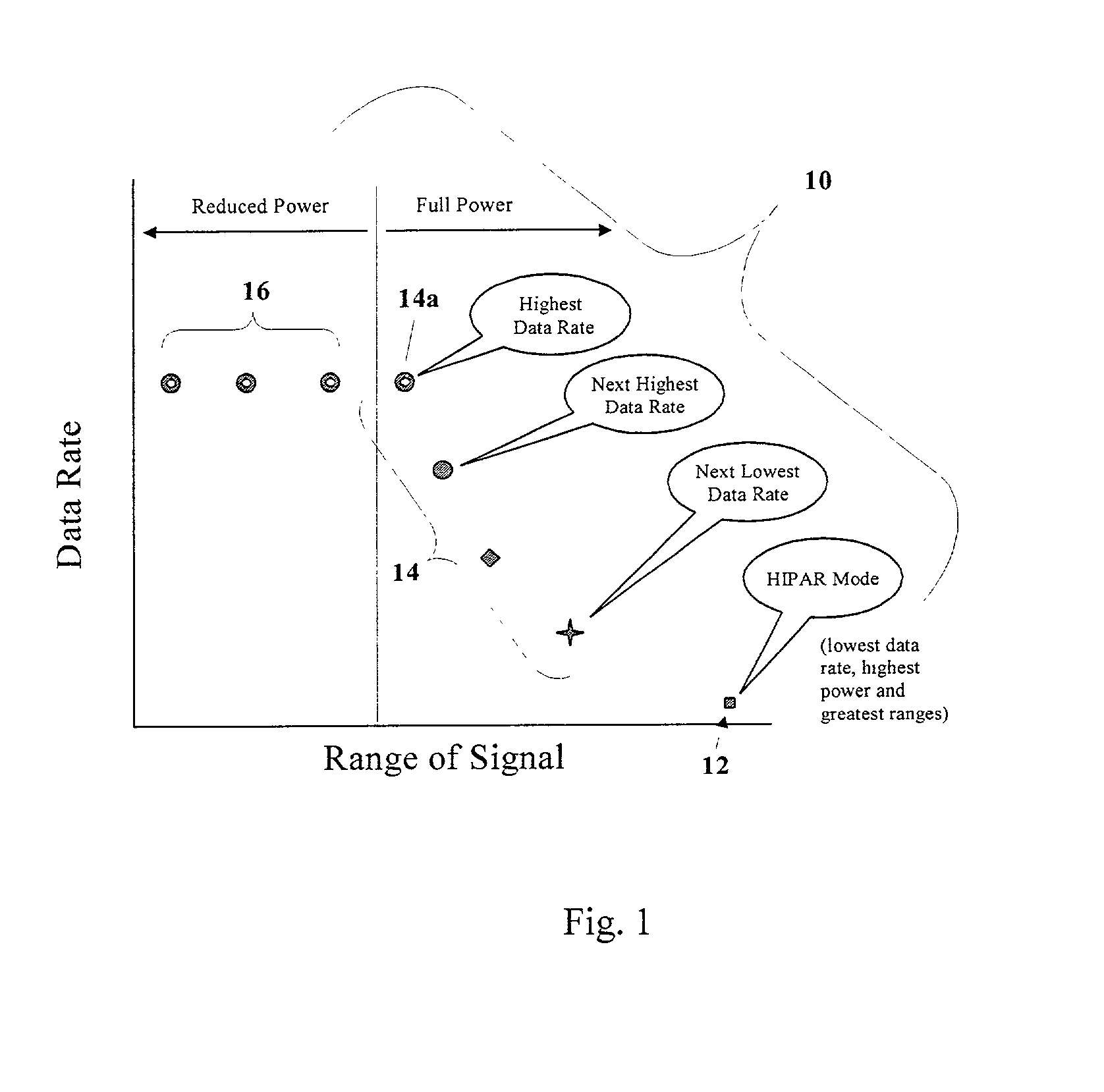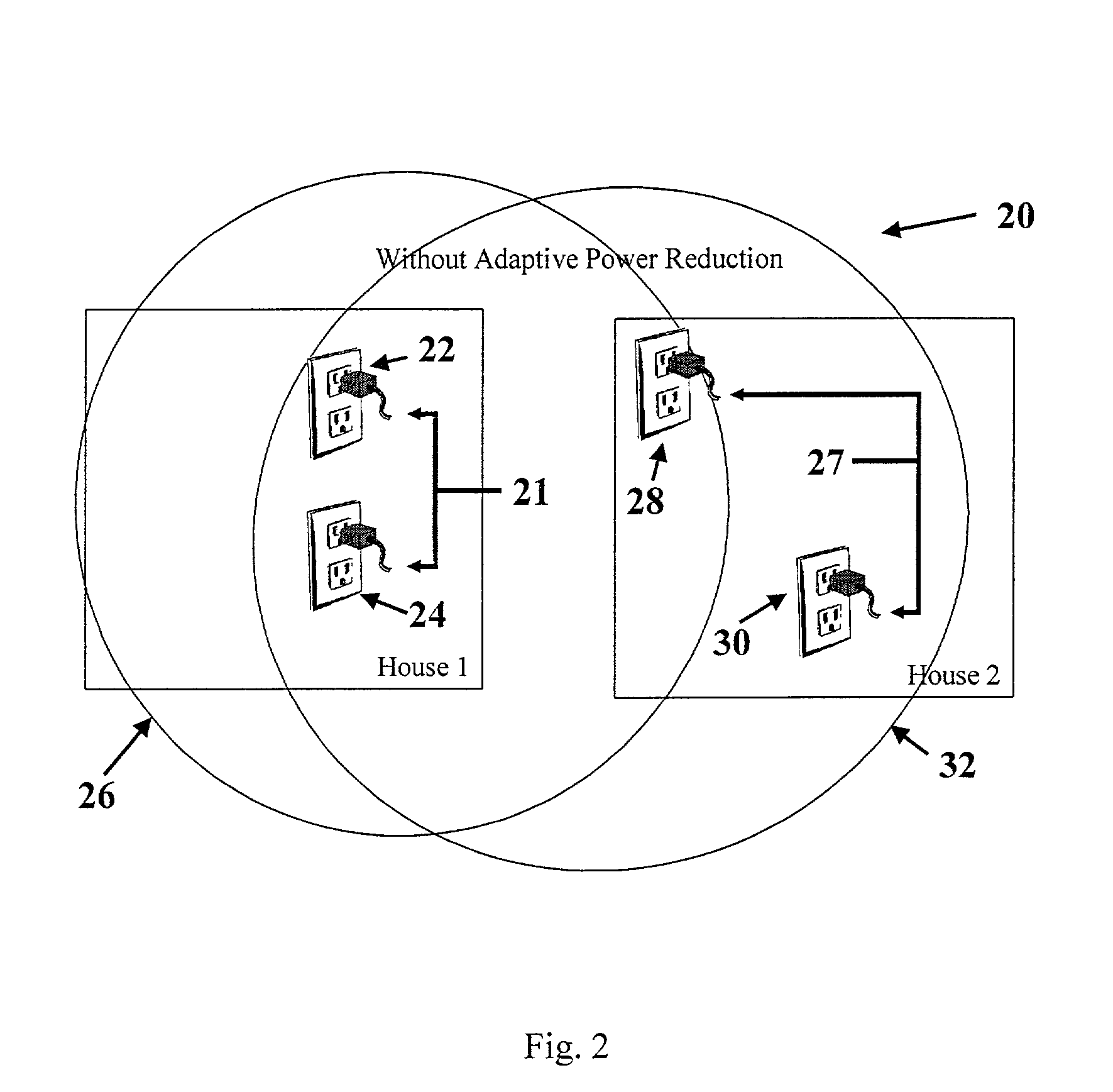Method to reduce interference and increase effective capacity of power line networking systems
a technology of power line networking and effective capacity, applied in the field of network communication systems, can solve the problems of reducing the utilization rate of capacity, reducing the efficiency of network interference, and reducing the amount of rf radiation, so as to reduce the emission of unintentional rf radiation
- Summary
- Abstract
- Description
- Claims
- Application Information
AI Technical Summary
Benefits of technology
Problems solved by technology
Method used
Image
Examples
Embodiment Construction
[0030]A method, and several variations thereof, of reducing interference and increasing the effective capacity of network systems operating on shared wire under heavy load situations are described herein. The method described herein may also be applicable to ad hoc wireless networks. While the range control method described herein is described as operating on node pairs, the techniques may easily be extended to cover applications which involve more than two nodes, i.e., where some of the transmissions are multicasts. As long as there is only one power line network on any given transformer, the problem of network overlap on the physical system does not exist, and carrier contention problems are lessened. In such a situation, the power of the transmitter may be maximized—limited only by the regulations regarding unintended conducted and radiated emissions. When, however, there is contention for the network media, performance gains are possible by transmitting at power levels that are ...
PUM
 Login to View More
Login to View More Abstract
Description
Claims
Application Information
 Login to View More
Login to View More - R&D
- Intellectual Property
- Life Sciences
- Materials
- Tech Scout
- Unparalleled Data Quality
- Higher Quality Content
- 60% Fewer Hallucinations
Browse by: Latest US Patents, China's latest patents, Technical Efficacy Thesaurus, Application Domain, Technology Topic, Popular Technical Reports.
© 2025 PatSnap. All rights reserved.Legal|Privacy policy|Modern Slavery Act Transparency Statement|Sitemap|About US| Contact US: help@patsnap.com



